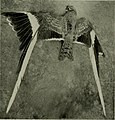File:The American Museum journal (c1900-(1918)) (17974546639).jpg
Appearance

Size of this preview: 626 × 599 pixels. Other resolutions: 251 × 240 pixels | 501 × 480 pixels | 802 × 768 pixels | 1,070 × 1,024 pixels | 1,450 × 1,388 pixels.
Original file (1,450 × 1,388 pixels, file size: 617 KB, MIME type: image/jpeg)
File history
Click on a date/time to view the file as it appeared at that time.
| Date/Time | Thumbnail | Dimensions | User | Comment | |
|---|---|---|---|---|---|
| current | 21:54, 11 December 2016 |  | 1,450 × 1,388 (617 KB) | JMK | rotate, adjust light levels |
| 08:55, 20 September 2015 |  | 1,388 × 1,450 (531 KB) | Fæ | == {{int:filedesc}} == {{information |description={{en|1=<br> '''Title''': The American Museum journal<br> '''Identifier''': americanmuseumjo15amer ([https://commons.wikimedia.org/w/index.php?title=Special%3ASearch&profile=default&fulltext=Search&searc... |
File usage
The following page uses this file:
Global file usage
The following other wikis use this file:
- Usage on fi.wiktionary.org
- Usage on is.wikipedia.org
- Usage on ms.wikipedia.org
- Usage on ru.wikipedia.org
